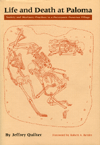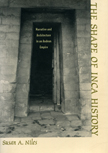Paracas Art and Architecture
"Between 1925 and 1928 several spectacular cemeteries were excavated on the Paracas Peninsula of Peru's south coast. Hundreds of mummies, naturally preserved in the arid sands of this Peruvian desert region, were found wrapped in some of the most magnificent textiles ever produced. Paracas Art and Architecture provides the first comprehensive overview in the English language of recent research undertaken on the people who occupied this region between 400 B. C. and A. D. 200 and the textiles and ceramics they produced. Andeanists will find this book a valuable resource on the technology, history, and cultural dynamics of this important but poorly known culture."—Donald A. Proulx
"Paracas is, after all, the granddaddy of all Peruvian archaeological sites and still the greatest treasure trove of textile art we have from antiquity. The sheer brilliance of the Paracas textiles as objects has, however, overshadowed the people who made them and their role in the development of Andean civilization. This book puts the people back into Paracas and presents an up-to-date look at research into a wide range of problems presented by Paracas culture and its remarkable artifacts. The essays cover topics from art to chemistry and together make a strong statement about the diverse points of view necessary of modern archaeological inquiry."—Ed Franquemont
The word "Paracas" evokes images of dazzling textiles, handsome, polychrome-crusted pottery painted with rich resin pigments, and extraordinarily thin, finely crafted monochrome pottery. These are the principal artistic manifestations of a 900-year-long cultural tradition that flourished many centuries ago on Peru's south coast.
During the past decade, an increasing number of scholars have devoted their studies to Paracas or to Paracas-related material. Paracas Art and Architecture is the first interdisciplinary collection of the current research results—historiographical, archaeological, cultural, architectural, technical, iconographic, and stylistic—of some of these path-breaking scholars. Bringing a much-needed well-roundedness to their media and data, the contributors include archaeologists, art historians, a fiber artist, and a fiber chemist, all of whose varied skills and approaches help unify our emerging view of this endlessly interesting area.
Anne Paul provides insightful notes of the social implications of the Paracas burials, while Kathryn Jakes outlines the methodology that can be used to determine patterns of textile degradation, preservation, and alteration. Through Mary Frame's meticulous analysis of the structure of Paracas headbands, abstract concepts of space, number, and order in this preliterate society are revealed.
Culture and influence are examined by Dwight Wallace, who demonstrates the Chavin culture's influence on the south coast's Carhua painted textiles, and by Sarah Massay, who provides a valuable description of late Paracas site distributions in the lower Ica Valley. Ann Peters interprets social and ecological relationships depicted on a group of textiles from Cerro Colorado on the Paracas Peninsula.
Richard Daggett gives an excellent overview of the discovery of the Paracas cemeteries, while Helaine Silverman provides insightful comments on the stylistic, cultural, and ethnic differences on the Paracas, Topará, and Nasca polities.
1. Paracas: An Ancient Cultural Tradition
on the South Coast of Peru
Anne Paul
2. Paracas: Discovery and Controversy
Richard E. Daggett
3. A Technical and Iconographic Analysis
of Carhua Painted Textiles
Dwight T. Wallace
4. Structure, Image, and Abstraction:
Paracas Necropolis Headbands as
System Templates
Mary Frame
5. Paracas Necropolis Bundle 89:
A Description and Discussion of Its Contents
Anne Paul
6. Physical and Chemical Analysis
of Paracas Fibers
Kathryn A. Jakes
7. Ecology and Society in Embroidered
Images from the Paracas Necropolis
Ann H. Peters
8. Social and Political Leadership in the Lower
Ica Valley: Ocucaje Phases 8 and 9
Sarah A. Massey
9. The Paracas Problem: Archaeological Perspectives
Helaine Silverman





